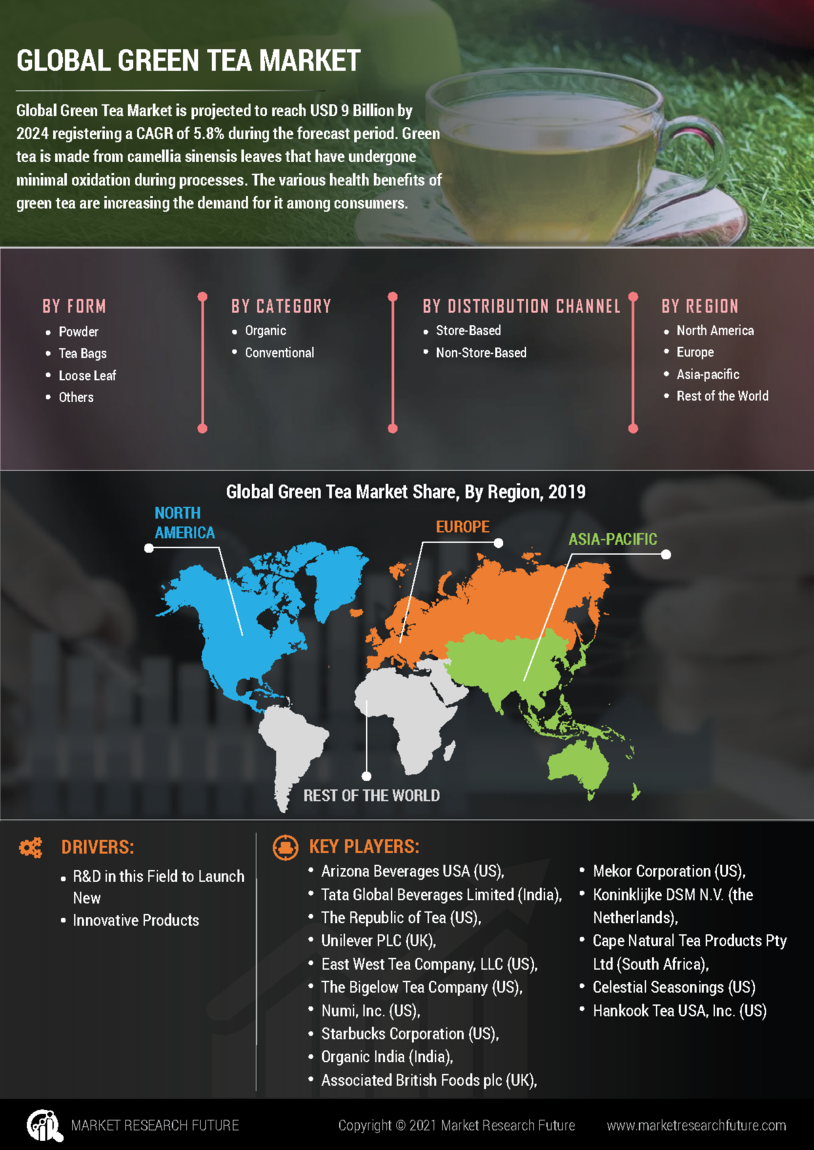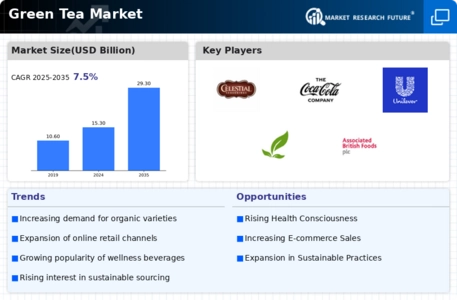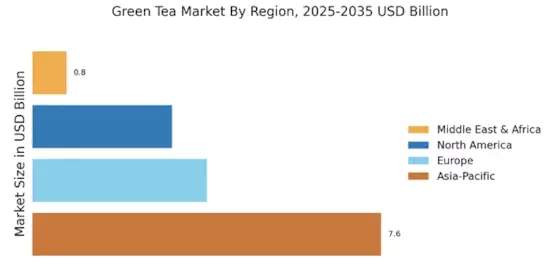Green Tea Market Summary
As per MRFR analysis, the Green Tea Market Size was estimated at 15.27 USD Billion in 2024. The Green Tea industry is projected to grow from 16.41 USD Billion in 2025 to 33.83 USD Billion by 2035, exhibiting a compound annual growth rate (CAGR) of 7.5 during the forecast period 2025 - 2035.
Key Market Trends & Highlights
The Green Tea Market is experiencing robust growth driven by health trends and product innovation.
- The North American market remains the largest for green tea, reflecting a strong health and wellness focus among consumers.
- In the Asia-Pacific region, green tea is the fastest-growing segment, fueled by increasing health consciousness and cultural influences.
- Green tea bags dominate the market, while loose-leaf varieties are emerging rapidly due to consumer demand for premium products.
- Rising health consciousness and sustainability trends are key drivers, as consumers seek ethically sourced and diverse product offerings.
Market Size & Forecast
| 2024 Market Size | 15.27 (USD Billion) |
| 2035 Market Size | 33.83 (USD Billion) |
| CAGR (2025 - 2035) | 7.5% |
Major Players
Unilever (GB), Nestle (CH), The Coca-Cola Company (US), PepsiCo (US), Ito En (JP), Tata Consumer Products (IN), Dilmah (LK), Harney & Sons (US), Twinings (GB)


















Leave a Comment